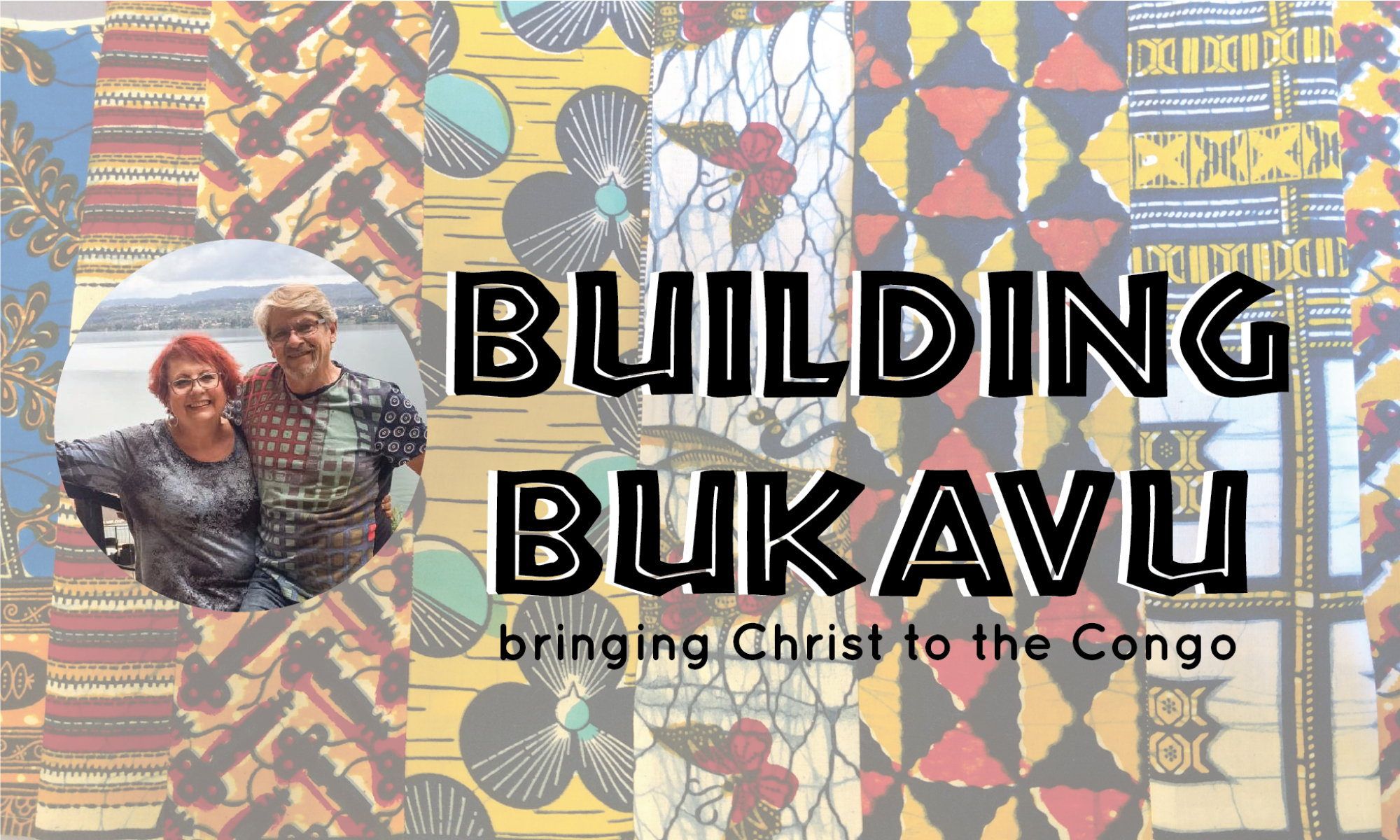 After two days’ travel by air and on land, in vans and on foot, we arrived at the border of Rwanda and the Congo. The river Ruzizi is the border. A bridge spans the waters, the only way to enter Congo in this province. It is old and rickety, with loose or missing boards, some higher than others, and a bit tricky to navigate. Nationals walk briskly across, sometimes barefoot, with heavy loads on their heads or backs. After officially exiting Rwanda, we walked slowly across, keeping our eyes riveted on the boards, not the rushing water below. Well, that was me at least. Behind us walked many men, each one paid to carry one of our ten 50-pound bags, us toting our carry-ons.
After two days’ travel by air and on land, in vans and on foot, we arrived at the border of Rwanda and the Congo. The river Ruzizi is the border. A bridge spans the waters, the only way to enter Congo in this province. It is old and rickety, with loose or missing boards, some higher than others, and a bit tricky to navigate. Nationals walk briskly across, sometimes barefoot, with heavy loads on their heads or backs. After officially exiting Rwanda, we walked slowly across, keeping our eyes riveted on the boards, not the rushing water below. Well, that was me at least. Behind us walked many men, each one paid to carry one of our ten 50-pound bags, us toting our carry-ons.
We were quite a sight, but unfortunately, photos were not allowed. Ever the rebel (in a small way) I wanted to surreptitiously take one or two, but Ray kiboshed that. For some reason, he was opposed to explaining his wife to the authorities and paying her fine, or worse, overnighting in a less-than-pleasant police station. Where is his sense of adventure?
Stepping off the bridge, we had arrived at the open air immigration office in a drizzle of rain. We stood in line to have our passports stamped, and were thrilled when the director of Tracy’s Heart met us. She had already talked to the head of immigration, an acquaintance, who graciously approved our bags entering the country without undergoing inspection. This was a huge blessing!
We were whisked away in one vehicle, our bags in another. Exhausted and off-kilter from no sleep, we were all taken to the house where we, and many other missionaries before and after us, had lived in the past. It was a bit surreal, to say the least. Brenda, Field Coordinator of our HFCA mission, had traveled with us from Chicago, as she had been home for some R & R.
After spending a day unpacking and finding room (or not) for everything, we faced a challenge. Food was the first priority; there was nothing in the fridge. In the old days, we bought our veggies and fruit, and even orchids, from various traveling salesmen who brought them to our gate, wrapped in burlap and carried on their heads. We had a meat man who took our orders in kilos, then went to the open market where slaughtered animals hung in the open and various cuts would be macheted off, wrapped in newspaper (or whatever kind of packaging was available) and carried immediately to our house. Back then it was mainly Filet American (hamburger) or Roti du Porc (pork tenderloin) or a pork butt to be made into ham, a process that took several days. Chicken was not edible. It was too tough, like rubber bands, even when cooked in a pressure cooker. Occasionally, fish, fresh from the lake was available for a dollar a filet. They were small and one person could easily eat three or four if we were willing to pay the price. If I remember right, it was called Nile Perch, but today we know it as Tilapia!
However, things have changed a bit. Food doesn’t come to us–we go to it, somewhat as in the US. There is still an open market for all in-season fruits and vegetables, but there is a roof on it now. There are several grocery stores where we can buy canned goods, two kinds of frozen fish, frozen chicken, various kinds of locally made bread, even a piece of vegetable pizza (or a facsimile), one kind of locally made cheese. Finally, if you call ahead they will turn on a soft serve ice cream machine just for you! Nothing like this was available years ago.
On most streets, there are tiny tables or a blanket on the ground where you can buy bananas, huge avocados, eggs, juicy pineapples, and other fruit when in season. A neighbor sells homemade bread, so we can send a zamu (watchman) to buy it whenever we want. Coke in small glass bottles is available everywhere. We buy a case of empty bottles, then trade for a case of Coke-filled ones, made here with cane sugar. Coke is the traditional offering when guests arrive, so we are always prepared with a case on hand. Even Coke Zero is available in some places.
After playing the game of, “What do we want to eat?” and, “What is available?” we consulted with our kitchen helper, Cherona, and made a list. I decided to go with her to get the lay of the land where foodstuffs are concerned. Thus, a big cultural experience ensued.
